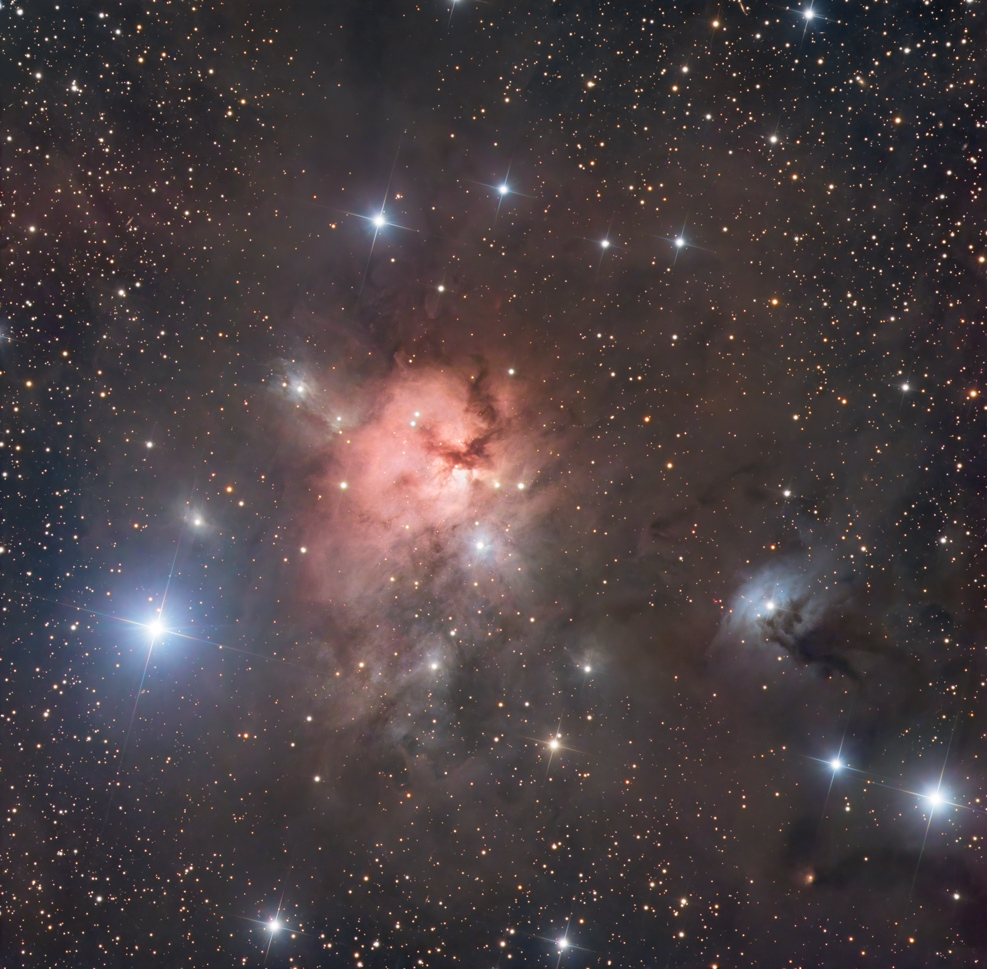

NGC 1579 and IC 2067: Because NGC 1579 resembles the better known Trifid Nebula, but lies much farther north our sky,
this pretty nebula is sometimes called the "Northern Trifid Nebula." The blue reflection nebula toward the right edge of the image, about 2/3 of the way down, is IC 2067, a reflection nebula. NGC 1579 is
about 2,100 light-years away and 3 light-years across. While NGC 1579 contains both red and blue colors (the blue in both being reflection nebulae), and both have prominent dust lanes,
they are quite different in that the Trifid Nebula gets its red from hydrogen alpha emissions, while NGC 1579 gets its red because the dust in NGC 1579 occludes and scatters the light from
an embedded, extremely young, massive star which itself is a strong emitter of red hydrogen alpha light.
Copyright 2019, 2020 Mark de Regt